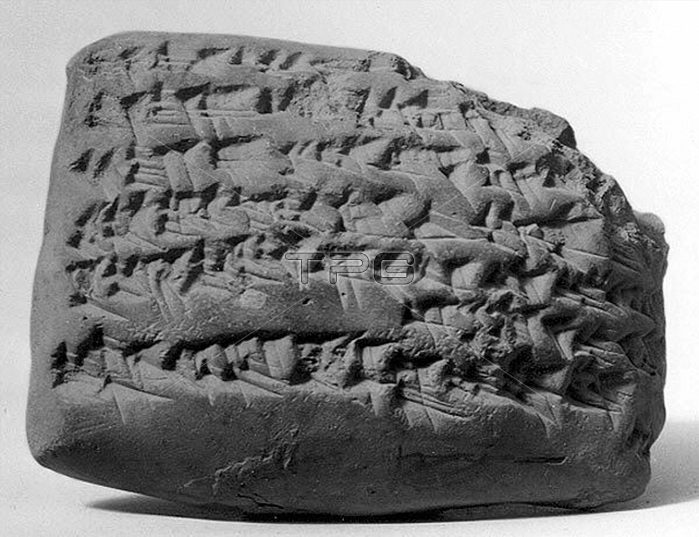
Cuneiform tablet. Gula incantation. Neo-Babylonian or Achaemenid, ca. mid- to late 1st millennium B.C. Probably from Sippar (modern Tell Abu Habba) in Mesopotamia. Proto-cuneiform is the name given to the earliest form of writing -- pictograms that were drawn on clay tablets. Gradually, the pictograms became abstracted into cuneiform (Latin, "wedge-shaped") signs that were impressed rather than drawn. At its greatest extent, cuneiform writing was used from the Mediterranean coast of Syria to western Iran and from Hittite Anatolia to southern Mesopotamia. It was adapted to write at least fifteen different languages. This late Babylonian tablet contains the text of an incantation. The text, which reads from left to right, addresses Gula and Marduk (here identified by his Sumerian name, Asalluhi), who were deities associated with healing, and it calls upon them to help cure an afflicted patient, who is thought to have been attacked by a ghost. Although physicians (Akkadian asus) treated a variety of medical problems, exorcists (Akkadian ashipus) also played an important role in healing by battling with the malevolent beings held responsible for medical problems through incantations, amulets, and accompanying rituals.
| px | px | dpi | = | cm | x | cm | = | MB |
Details
Creative#:
TOP22149553
Source:
達志影像
Authorization Type:
RM
Release Information:
須由TPG 完整授權
Model Release:
N/A
Property Release:
No
Right to Privacy:
No
Same folder images:

 Loading
Loading